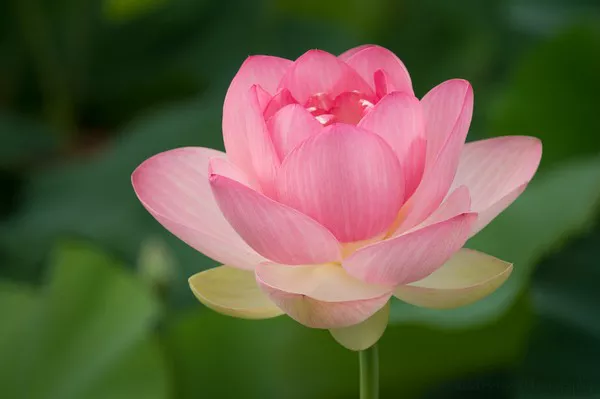The lotus flower, with its delicate petals and serene presence, has captivated humanity for centuries. Beyond its aesthetic appeal, this aquatic plant holds profound cultural, spiritual, and scientific significance. From ancient mythology to modern scientific research, the lotus flower continues to intrigue and inspire. In this comprehensive exploration, we delve into the multifaceted roles and functions of the lotus flower, uncovering its secrets and shedding light on its diverse attributes.
Botanical Overview
Before delving into its myriad uses and properties, it’s essential to understand the botanical characteristics of the lotus flower. The lotus belongs to the Nelumbonaceae family, comprising two species: Nelumbo nucifera (the sacred lotus) and Nelumbo lutea (the American lotus). These aquatic plants are renowned for their distinctive appearance, with large, round leaves that float on the water’s surface and striking flowers that emerge from long stems.
Cultural and Spiritual Symbolism
Across various cultures and civilizations, the lotus flower symbolizes purity, enlightenment, rebirth, and spiritual awakening. In ancient Egypt, the lotus held immense significance, often depicted in religious art and associated with the sun god Ra and the cycle of life and death. Similarly, in Hinduism and Buddhism, the lotus is a sacred symbol representing divine beauty, enlightenment, and the journey from darkness to light. The lotus’s ability to emerge from muddy waters and blossom into a pristine flower serves as a metaphor for spiritual growth and transformation.
Medicinal Properties
Beyond its symbolic value, the lotus flower possesses a wealth of medicinal properties that have been recognized and utilized for centuries. Traditional Chinese medicine (TCM) and Ayurveda, the ancient healing system of India, both incorporate various parts of the lotus plant into their treatments. The roots, seeds, petals, and stamens of the lotus are believed to have therapeutic effects, ranging from promoting digestion and reducing inflammation to improving mental clarity and enhancing libido.
Research into the pharmacological properties of the lotus has revealed its potential as a source of bioactive compounds with antioxidant, anti-inflammatory, and antimicrobial properties. Studies have identified alkaloids, flavonoids, phenolic compounds, and polysaccharides in lotus extracts, highlighting their potential in treating various ailments and supporting overall health and well-being.
Culinary Uses
In addition to its medicinal properties, the lotus plant offers culinary delights that are cherished in many parts of the world. Lotus seeds, known for their crunchy texture and mild flavor, are commonly used in Asian cuisines, particularly in desserts and savory dishes. These seeds are rich in protein, fiber, vitamins, and minerals, making them a nutritious addition to soups, stir-fries, and confections.
Lotus root, revered for its crispness and subtle sweetness, is a versatile ingredient in culinary preparations. Whether sliced, stir-fried, pickled, or added to soups and stews, lotus root imparts a unique texture and flavor to dishes while providing essential nutrients such as vitamin C, potassium, and dietary fiber.
Environmental Benefits
Beyond its cultural, spiritual, and culinary significance, the lotus flower plays a crucial role in maintaining ecological balance in aquatic ecosystems. Its broad leaves provide shade and shelter for fish, frogs, and other aquatic organisms, while its extensive root system helps stabilize sediments and prevent erosion. Moreover, the lotus’s ability to absorb excess nutrients from the water, including nitrogen and phosphorus, helps improve water quality and mitigate the harmful effects of eutrophication.
In addition to its ecological benefits, the lotus flower’s ability to thrive in diverse environmental conditions makes it an ideal candidate for phytoremediation—the use of plants to remove pollutants from soil and water. Research has demonstrated the lotus’s effectiveness in absorbing heavy metals, pesticides, and other contaminants, making it a valuable ally in efforts to clean up polluted water bodies and restore degraded ecosystems.
Art and Aesthetics
The lotus flower’s timeless beauty has inspired artists, poets, and artisans across the globe, serving as a muse for creativity and expression. From ancient cave paintings and temple carvings to contemporary artworks and fashion designs, the lotus motif continues to permeate various forms of artistic expression, symbolizing purity, grace, and spiritual transcendence.
In addition to its symbolic significance, the lotus’s vibrant colors, intricate patterns, and graceful form make it a popular subject in floral arrangements, garden design, and decorative arts. Whether depicted in paintings, sculptures, or textiles, the lotus captivates the imagination and evokes a sense of tranquility and harmony.
Conclusion
The lotus flower transcends its botanical identity to embody a myriad of meanings, functions, and values. From its symbolic resonance in cultural and spiritual traditions to its medicinal, culinary, and environmental benefits, the lotus remains a source of fascination and inspiration for humanity. As we continue to unravel its mysteries and harness its potential, the lotus flower reminds us of the inherent beauty and resilience of the natural world, inviting us to cultivate reverence and gratitude for the wonders that surround us.


